Hearing “Still D.R.E.” for the first time was a really important moment in my journey as a Hip Hop addict. At the time Dr. Dre was my Hip Hop hero in an era before that choice seemed as commonplace as it has become – especially for a non-producer. Simply an aspiring deejay/master of records, I played his World Class Wreckin’ Crew stuff, his N.W.A. catalog, his Death Row records – and even the retail-bootleg releases of the late ’90s. I was in awe of Dre’s incessant evolution, inspired by his quiet leadership, and loved his ability to channel records from yesterday into something entirely brand new. At the tail end of the Jeep-era, I also loved the way Dre records sounded in systems – something Dre maintained determined a record’s hit-factor. Being a fan on the cusp of Andre Young’s proper return to record-making was as musically exciting as anything I can remember.
Dr. Dre and Snoop Dogg’s proper reunion (including the return symbolic ’64 Impala rag-top) took place on Carson Daly’s TRL – at a time when I can admit that still tuned in. The pair had quietly worked together six months earlier on Snoop’s No Limit Top Dogg, but the nearly five-year creative and personal reconnection was downplayed. In the early ’90s Dre and Snoop’s chemistry was explosive in the era of the music video, and the visuals created the taste for “Gin & Juice,” for viewers far removed from South Central, Los Angeles. They had a large reputation to live up to. That October 1999 evening, seeing “Still D.R.E.” was my first time hearing “Still D.R.E.,” and without YouTube or Spotify, that experience was coveted in of itself, left to the whims of MTV/BET programmers more than my Internet browser (especially since my family did not have a computer). I got a small sampling, and I wanted more.

As with the case with most of late ’90s MTV/BET programming (especially of that caliber), I saw a lot of “Still D.R.E.” over the next month. The beat, the lyrics, the video, the D.O.C. in the back-seat first whet my appetite, and then I started to know all the words and ad-libs until the point I was sick of it. After a few weeks I wanted to hear more, and my curiosity about the album’s other songs tormented me in a way that seems lost these days. Luckily, by that time, an album was about to be in stores.
I caught a ride with my mom to the mall after school on November 16, 1999. I encouraged her to take her time and hand me the keys as I quickly returned to the car with 2001 in hand. I sat in the passenger seat, turned on the car and dug in with liner notes in hand.
The THX “LoLo” opening was rightfully cinematic, as I truly had no idea what was going to happen next. Even three years removed from the partial disappointment that was Dr. Dre Presents…The Aftermath, I knew that this musical master was highly deserving of my $17 of saved up after-school job wages, and that the ads feeding me for months in The Source, XXL and Blaze made it an automatic-purchase. Even if the album was a bust, the liner notes and photographs would inevitably satisfy. Was he going to address Suge? Was he going to address Tupac? Was he going to blow my speakers?
Disappointment was not the case. While it is not one of my favorite albums, let alone my favorite Dre album, 2001 was the LP that caried me into the new millennium. The purist in me rejoiced at the inclusion of some of the old “Death Row Inmates” from The Chronic, Compton veterans like King Tee and MC Ren, the unpredictably dope Eminem, dark horse features such as Devin The Dude, Defari and Kokane. I focused on “Next Episode” and “Some L.A. Niggaz,” while was also drawn to “Xxplosive” and “What’s The Difference.” It would take me weeks to learn the song titles, familiarize with the features, and fully grasp the disc I had purchased.
Those days are gone, unless you deliberately try to live in a vacuum.
Free Streaming Albums Are An Industry Standard In 2012
2012 has brought the distribution of music full circle. In the last decade, technology has made music and video free on-demand, and the album-buying experience has moved from (arguable) necessity to novelty. The same labels that scoffed at artists posting entire (or even bulks of their) albums to MySpace five years ago are now using technology as a promotional tool. Several of the year’s most-talked about, critically-acclaimed albums were streamable to coincide with their release. And it was authorized.
Arguably my favorite album of the year to date, Ab-Soul’s #controlsystem was added two days after release to a Top Dawg Entertainment-owned Soundcloud. The embeddable player was posted on sites like HipHopDX, allowing the Interscope Records-backed digital album free listens and free exposure. The Carson, California emcee’s album sold over 5,000 in three days (TDE released the project on a Friday), putting him in close first-week sales proximity to Interscope label-mates like Azealia Banks (3,600) and MGK’s (8,500) EPs, both of which had advertising, promotion and cosigns that the Black Hippy member seems to have deliberately avoided. Just days ago, I was suggesting the album to a friend who’d never heard of Ab-Soul. Rather than rely on influence or bother to illegally rip the album, or expect him to pay $9.99 on a whim, I pointed him to the Soundcloud, still available online. If he likes what he hears, there’s a strong chance he will buy it – something that I know is the exception more than the norm, but still. As mixtapes like Crooked I’s Psalm 82:v6 and Slum Village and Mick Boogie’s Dirty Slums are available for retail purchase on iTunes and Amazon, streams like #controlsystem further blur the thin line between mixtapes and albums, at least in theory.
In Many Cases Streaming Albums Are Still Selling Extremely Well
Bar none, the boiling point for free album streams came the release-week of June 5. Big K.R.I.T.’s Live From The Underground and Curren$y’s The Stoned Immaculate both used the technology and promotional tool. The former, a Def Jam release, was streamable on NPR.org for an entire week before release. When this happened over Memorial Day weekend, the highly-anticipated album had not leaked, sending thousands of readers to National Public Radio’s website who may not otherwise go to check up on “Fresh Air” and “Morning Edition” programming. In turn, 10 days later Live From The Underground achieved a Top 5 debut, selling over 40,000 units in seven days – a sizable feat for a Mississippi artist, who celebrates his “underground” cult following. Fans were used to hearing K.R.I.T.’s mastery for free, and even with his studio debut, they were treated to the same access.
Also in the Top 10 from June 5, Curren$y achieved his highest charting to date with a Warner Bros. release, selling over 35,000 units. Both of these albums were met with favorable reviews, but perhaps more than the acclaim, the free album streams placed both hardworking acts in front of fickle consumers who opted to pony up. Like K.R.I.T.’s base, Curren$y’s fans are often used to free product – most notably last year’s Covert Coupe release. In true #JetLife fashion, Warner perhaps wanted to pass the joint around and take up a collection later. The thinking worked, giving Spitta his highest-charting album to date, including two previous Def Jam-backed releases.
Other releases, across the landscape of Hip Hop have used this tool. My other consideration (thus far) for 2012’s best album, Killer Mike’s R.A.P. Music, used this strategy. The technology of being able to sample what so many seem be calling a modern classic allowed not only Killer Mike (and El-P) to sell some albums from the independent Williams Street Records, but to sell tickets on their ongoing tour – arguably a stronger revenue stream for artists in 2012. Like K.R.I.T. with NPR, placing the album’s free stream in a publication like Spin, exposed the ever-talented producer and emcee to lovers of music, who may or may not be as familiar with I Pledge Allegiance To The Grind II or The Cold Vein. This was the modern version of a full-page ad in the magazine. Selling over 5,000 first-week albums independently was a respectable feat for Mike Bigga, who was not as successful finding buyers for his previous indie albums, at least according to the numbers. Moreover, I predict that R.A.P. will be a consistent mover throughout the year, with word-of-mouth and jaw-dropping visuals (a call back to the Dre & Snoop model).

As indie sensations like Blu, Smoke DZA, El-P and SpaceGhostPurrp are using this strategy, the majors are continuing to keep it in the play-book. This Wednesday, Maybach Music Group’s Self-Made, Vol. 2 will be the latest evaluation of this strategy. A top 5 debut is not a surprise, as Warner Bros. was willing to offer one of the biggest releases on their calendar away early, and for free. Here in Philadelphia, it’s certainly been a staple heard out of passing traffic.
If Music Is For Sale But Also Free, Will Fans Buy It?
In 2011, Jay-Z & Kanye West’s Watch The Throne was the leak-proof success story, a “catch me if you can” retaliation to technology that involved state-of-the-art tools, hotel room studios and globe-trotting. It broke iTunes sales records and continues to sit on the Top 200 almost a year later. But not everybody has that luxury. Less than a year later, artists seem to have the comp-savvy consumer in mind. Moreover, they seem to have the fan in mind. The belief in the music being strong enough to be heard and then sold is certainly fan-friendly. Perhaps it’s part of the reason that Hip Hop has been such as leveled playing field this year, with some amazing albums in its first half.
Hopefully the labels large and small can use this metric to better serve the consumer, and actualize the theory that if you stream it, we will come.
Jake Paine is HipHopDX’s Editor-In-Chief. He has worked for DX since 2007, after five years as Features Editor at AllHipHop.com. He has contributed to Forbes.com, The Source, XXL, The Pittsburgh Post-Gazette and others. He lives in Philadelphia, Pennsylvania. Follow him on Twitter (@Citizen__Paine)
RELATED: (Halftime 2012) Punked: Why Dissing Drake Is Trendy (And Sometimes Justified) In 2012
RELATED: 2011’s HipHopDX Halftime series
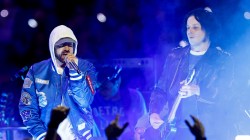
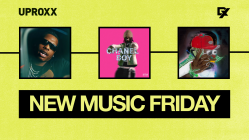
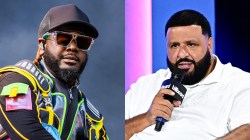
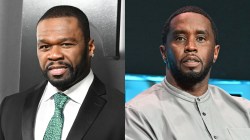
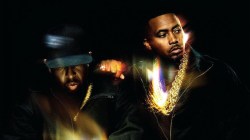
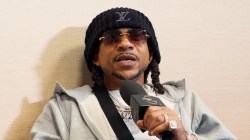
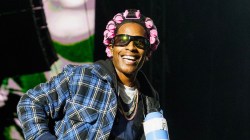


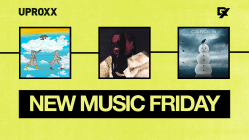
“Free” albums are killing the money game.
How are the new artists gunna make a come-up without bowing down. and bending over to the wants of the corporate slave masters?
Thing is the majority of “FREE” albums are worth the time it takes to download them.
plenty of guys touring and performing off of the strength of free albums/mixtapes(in essence demos)
Great piece. I’m shocked at this phenomenon too, as I thought K.R.I.T. was doomed with that stream though. Quite the contrary though.
I’d say there’s a good reason why B.o.B. and Nicki Minaj didn’t do that. Nobody would have supported – shit sucks.
I love the lowered expectations of this generation and its ability to make failure look like success
Are any of those albums you mentioned close to gold??
Big Krit “Live from the Underground” dropped on Def Jam, you really think 40K is a feat worth celebrating??…… I’m a fan & all, I actually bought the album but those numbers are tragic.
it’s not 2000 anymore, gotta recalibrate your fucking metrics.
Well look if it was 6 years ago KRIT would of sold about 200,000 – 250,000 in the first week it’s ridiculous I’m all for SOPA and PIPA… I would say Hip Hop is the genre that is suffering the most from Illegal downloads because Adele sold about 22 mil.
Plus if we couldn’t get music for free the Mixtape game would be more important
Adele’s numbers are absolutely ridiculous.
Your poitn of view is whats wrong with world
Its like saying We should just accept a bad economy or a high unemployment rate because “Its not the 90’s anymore”
Thats a losers mentality, what we should be doing is trying to fix whats wrong to get us back where we were instead of just accepting defeat
Adele’s numbers are ridiculous/incredible in any era
FUUQQ YEEZ MY NIKKAS
FINALLY IT HAPPENED – JUST GOT A NEW RIDE – A CAM A RO CONVERTIBLE.GOT APPROVED FOR 26 LARGE. BEEN 5 YRS SINCE IVE GOTTEN SHYT APPROVED, BUT NOW ALL MY CRE-DIT SHEET GONE. ALL OF IT.
IF YOU STRUGGLING WITH THAT CREDITT HISTORY ISHH, GET RID OF ALL DAT TODAY – CALL THESE PEEPS AT 8^8^8-9-2-7 -3-3-5-6. . THEY DO AMAZING WORK AND THEY ARE CHEAP AS FUQQ. GOT RID OF ALL MY SHYYT IN NO TIME.
MY HOMEBOY WAS IN THE GUTTA TOO, AND HE CLEANER THAN ME NOW-gettin a condo!!
Hit em up – THEY WILL HELP U!!
40,000 COPIES IS YOUR STANDARD FOR SELLING “EXTREMELY” WELL??? SO WHAT DO YOU CALL LIL WAYNE 1,000,000 COPIES THEN???
hahahaha his record label buying 40% of that you dumbfuck
“And If ya record goes platinum its got nothing to do with luck, it just means that a million people are stupid as fuck” – Immortal Technique
It’s really obvious Birdman bought a load of Tha Carter IV because Eminem is the biggest rap star in the world and sold 741,000 in the first week, as if they thought they would get away with that.
They both are bad
they’re*
They’re
So your saying Eminem is bad!? OK tell the truth as you saying Eminem is bad as an MC & a lyricist?
no, that was meant for the first comment from BLACK
Wayne’s sales are bad when you consider that he is in the upper echelon of known MCs, the amount of views on youtube and other places, the non-stop play on tv and radio
As a fan, we luv free music but im jus not sure dat free albulms dat required $ from da label(dat wants to profit) is a good idea.If majority of albulms leak like a week or 2 weeks earlier anyway, y do we need a full albulm stream? It’s already harder to sell anyway but music is an art form & anticipation always leads to more sales especially for new artists…There’s already a lack of talent in hip-hop so w/da few talent dats out there, I wanna atleast be able to see those guys sell well so they can have longevity in their rap career.
If SOPA and PIPA were implemented then a whole sneak preview would be the dopest thing ever & KRIT would have sold shit loads more than he did, tbh he deserved to sell shit loads just because of the mixtapes he gave us.
@ internet rap critic:
Your poitn of view is whats wrong with world
Its like saying We should just accept a bad economy or a high unemployment rate because “Its not the 90’s anymore”
Thats a losers mentality, what we should be doing is trying to fix whats wrong to get us back where we were instead of just accepting defeat
++++++++++++++++++
THIS RIGHT HERE
@ ANON
PIPA IS A LAW NOW
& IF BOTH WERE AROUN
U STILL HAVE ALOTTA OF THESE KIDS WHO R PERSONALITY FOLLOWERS & INTERNET WEIRDOS & NOT ACTUAL MUSIC LOVERS
PROBLEM STILL EXISTS
“U STILL HAVE ALOTTA OF THESE KIDS WHO R PERSONALITY FOLLOWERS & INTERNET WEIRDOS & NOT ACTUAL MUSIC LOVERS”
I don’t really care if their around I just feel sorry for them really…
I CAN RELATE TO THAT
BUT WE WENT FROM NOT EVEN SEEING A RAPPER’S FACE & COPPIN WAX & CASSETTES
TO AN ERA OF FULL STREAMS, MAXIMUM INTERNET EXPOSURE, ALBUM LEAKS, FREE MIXTAPES & THE SALES ARE WORSE THAN THE DAWNIN OF THE GENRE
HERE’S A GEM FOR INDIE ARTISTS – Even if you’re giving your mixtape out for FREE on your site…
You should still put it up for sale on iTunes.
Reason being… not everyone will know about you or your personal site.. but iTunes is like shopping at Walmart. You go in for one thing.. and wind up buying something else you had no intention on purchasing.
I get monthly income from 2 mixtapes that were released for for FREE and on sale through iTunes…
Proof read your shit Jesus. It was Memorial Day weekend not Labor Day and Watch the Throne hasn’t even been out for over a year.
luv hip hop but these new catz gave the game away for free, why pay for something you can get for free? a man check out my mix tape it’s free, but studio time aint, the writing is on the wall, the only artist that will remain are the one’s who have a real love for the music, and not in it for the $
LOL @ dude comparing all these low post numbers and trying to find a ray of light
“Ab Soul record sould 5,000 copies….”
You could have just stopped there because any other way you cut it those numbers arent good, you can lie to yourself all day long but the fact is those numbers are laughable
Big K.R.I.T selling 40K on DEF JAM is a TRAGEDY, there is no way to beat around the bush on that, shit had promotion and everything, a slew of free albums to hype it up and……..40K??…… And even worse is you trying to pretend like that is a success
The first step to overcoming a problem is admitting you have one, like the drug addicts say, and by sugar coating failure and trying to paint it as success, your not solving the problem, just ignoring it, which only makes it worse
Numbers that match the critical acclaim would be something worth celebrating. Hell, even numbers matching the promotion would be a step in the right direction, how the hell are B.O.B & Nicki Minaj hovering around fucking gold while I’m being force fed there bullshit on the radio every 5 minutes??
You know why nobody buys rap records anymore?? …… Its precisely because everything is made readily available for free, in addition to the fact that artists have no self control in the digital age and feel the need to bust off an album and 5 mixtapes every year, there is no quality control and the music lasts about a week before this ADD generation is looking for something new
But you still gotta try and find ways to fix the problems instead of giving up and saying “Hey everyone, my new album sold 35K, VICTORY IS MINE!!!”
Fuck outta here
ok you sell 35k… thought not go fuck yourself!
^^^^
I’m not a musician clown, but If I were and I only sold 35K, minus studio cost, minus production cost, mius what the label & Managment take away, minus everything else, I wouldnt be celebrating it, lol
how big is KRIT’s fanbase really?
that made me Laugh. Thanks for that one!
On the truth, You mr.anonymous need to see the bigger picture. How do You not realize that these cats out here selling 5000 first week and stayin’ tru to what rap culture is all about… realize, in less than 5 years THEY will be the ones sittin’ on Top of the Game and selling those big numbers… and why? because the hip hop headz & consumer base that push rap into the proper directions in the streets WILL HAVE respect for these young dudes that started from nothing/with nothing/ yet did it for the music … rather than a paycheck in order to separate the Lames. and bring rap back to the essence that makes our music Great
I know he’s on Def Jam but do others outside of these blog sites know? Was a single released? Any ads? Any radio play?
“the artist gets robbed in the end”….NIGGAZ GOTTAS QUIT BEING SO CHEAP..and,….”break bread” with the artist who provides you with his or her own “art”…….AB SOUL might have sold 5,000 copies….but….HE HAS “REAL” TALENT….case of “QUALITY” over “QUANTITY”….#STOP HATIN’…
Now, the only people that buy albums are those that want to. Make the fans want to support you.
I predited Krit’s dismal number way before his album dropped, likewise 50 cents for his upcoming album and I will use this 2 as examples of how artist figure it out wrong. Krit has real talent, arguably better than j.cole, but ‘life from the underground’ besides the fact that it dropped after krit had flooded the market with several mixtape releases, the album did not just have the crossover appeal for those who actually buy records. I know this last statement is up for a lot of criticisms but lets face it, look at the charts toppers, most of those albums making the numbers dont even stand a chance in top album reviews of most hip hop sites.
50 on the otherhand simple just feel off, why, because he has lost his touch, his balance. my point being talent can only take your as far as critical review status, what really makes an artist stand out is how he/she uses that talent to give the people what they want.
I KNEW KRIT WASN’T GONNA SELL BECAUSE HIS “PEER FANBASE” AIN’T BUILT LIKE HIM & HIS MENTALITY
BUT THAT CRITICAL REVIEW SH!T U TYPIN IS ASININE UR QUIETLY COSIGNING THE FCUKERY
BUT LET’S B POSITIVE KRIT HAS SOLD JUST AS MANY UNITS AS WAKA
j cole pushed more than 250000 in his first week on columbia without no radio airplay. def jam’s marketing department is the laziest i ve ever seen why has nt rick ross whose records are all over the radio never gone platinum.how will big krit push wood when rick ross the biggest rapster on their label barely pushs gold?
Damn I miss the days when buying a new album was a big event and I’d end up memorizing every song title, producer, and feature. No point in lamenting that shit now though, technology is here to stay and it has its advantages.
This article frames the streaming albums thing as a successful tactic but really there’s no way to know because we don’t know what they would have sold without that. It makes sense though, I guess you can either go for the pop market route which barely anyone breaks into and hope to go gold or platinum, or try to make real meaningful music, make it easy to listen to, and hope real music fans will respect that enough to keep you floating till you make the next one. You might not make millions that way but you may still get artistic longevity at least.
I was mad I couldn’t get the R.A.P. Music stream to work, I might still pay for that one if I run across it.
http://www.soundcloud.com/anarchy12
I don think theres a problem with free music or mixtapes but my concern is this flooding the game. Yes i understand that artists need to stay relevant but that doesnt mean you should drop 10 mixtapes a year.
Ive also noticed that most artist that flood the game with many mixtapes arent being creative. Most of their mixtapes are all the same, so they basically jus releasing the same stuff over and over.
The next problem i have with flooding the game is i feel it de-values the music as an art form. Instead of droppin one mixtape and let the fans soak it all and release listen to the mixtape for a few months, its kinda like artists dont care about the music as an art and are jus like” HERE you go bitches more free music”
i like to be excited for new music not sit there and think “ANother mixtape?! man i didnt even fully listen to the last one”
But can we blame the artists or this microwave on to the next one generation?
Yeah I feel your point about flooding the game, you spread an artists material too thin and eventually they get worn out and repetitive. I understand the reasoning though, there’s so much competition for the dollar now. The sheer number of MCs old and new that one has access to through the internet is insane.
Jake, you do know Dre doesnt write his own lyrics? however his sound is untouchable. cant argue with you on that.